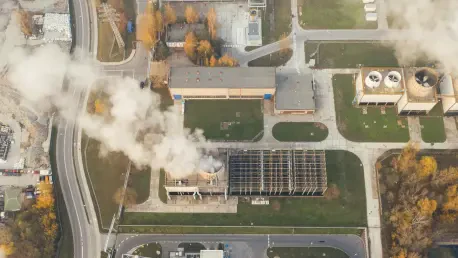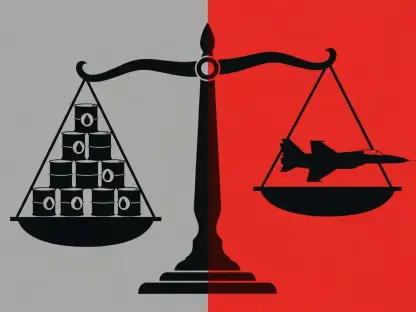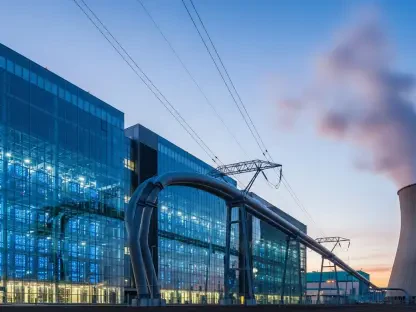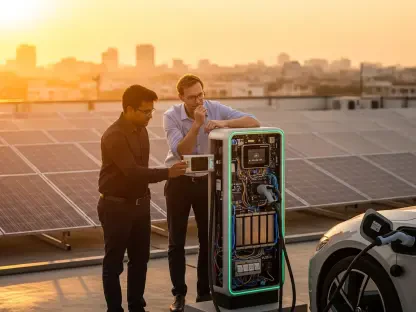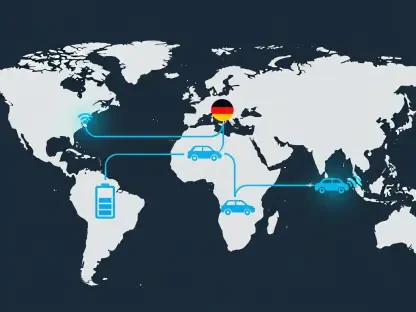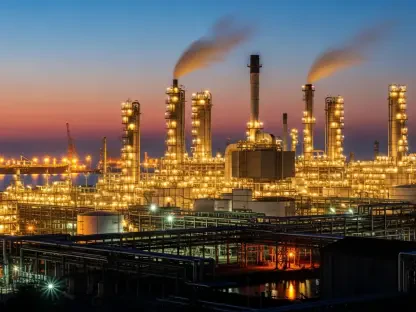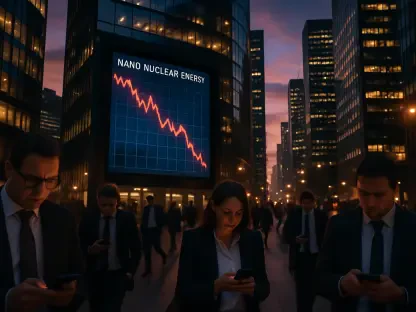The environmental landscape of Europe stands at a pivotal moment, with recent findings from the European Environment Agency (EEA) revealing a troubling trajectory of ecological degradation across 38 countries, casting a shadow over the continent’s natural resources and societal stability. This comprehensive assessment highlights the dual crises of biodiversity loss and the intensifying impacts of climate change. While strides in areas like greenhouse gas reduction and renewable energy adoption offer some hope, the overarching picture remains bleak. The urgency to address these challenges is palpable, as the health of Europe’s ecosystems is intricately linked to economic prosperity and quality of life. This raises critical questions about whether current efforts can halt the decline or if bolder, transformative actions are needed to secure a sustainable future for the region.
Current Environmental Challenges
Biodiversity Under Siege
The alarming erosion of biodiversity across Europe’s terrestrial, freshwater, and marine ecosystems presents a profound threat to ecological balance and human survival. Driven largely by unsustainable practices in agriculture and food consumption, the degradation of natural habitats disrupts vital services such as pollination, water purification, and soil fertility. These losses are not merely academic concerns; they directly jeopardize food security for millions and weaken natural defenses against disasters like floods. The ripple effects extend to rural communities and urban centers alike, where dependence on healthy ecosystems for resources is often underestimated. Addressing this crisis requires a fundamental shift in how land and resources are managed, particularly in sectors that prioritize short-term gains over long-term sustainability.
Beyond the immediate ecological impacts, the decline in biodiversity undermines Europe’s resilience to other environmental pressures. Species extinction and habitat loss create a domino effect, reducing the capacity of ecosystems to adapt to changing conditions like rising temperatures or altered precipitation patterns. This fragility exacerbates vulnerabilities in food production systems, where monocultures and industrial practices already strain natural limits. Economic sectors tied to nature, such as tourism and fisheries, face growing risks as well, with potential job losses and revenue declines. Tackling this issue demands not only policy interventions but also widespread cultural changes in consumption habits, urging societies to value and protect the intricate web of life that sustains them.
Climate Change: A Growing Threat
Europe’s distinction as the fastest-warming continent brings with it a host of escalating dangers, as extreme weather events like wildfires, floods, and heatwaves become more frequent and severe. These phenomena pose direct threats to public health, with heat-related illnesses on the rise, and to infrastructure, where aging systems buckle under unprecedented stress. Entire communities, particularly in vulnerable regions, face displacement and loss of livelihoods as floods devastate homes and agricultural lands. The economic toll is staggering, with billions in damages annually diverting resources from other critical areas. Immediate action to mitigate emissions remains essential, but equally important is the need to adapt infrastructure and urban planning to withstand these new realities.
The broader implications of climate change ripple through Europe’s security and stability, amplifying existing inequalities and straining governmental resources. Coastal areas grapple with rising sea levels, threatening both ecosystems and human settlements, while inland regions face prolonged droughts that challenge water availability for farming and domestic use. Health systems are increasingly burdened by climate-driven diseases and mental health crises stemming from environmental displacement. The urgency for comprehensive strategies that integrate adaptation—such as building resilient infrastructure—and mitigation—through aggressive carbon reduction—cannot be overstated. Without these measures, the continent risks a future where climate impacts outpace the capacity to respond effectively.
Progress Amid Crisis
Climate Action Leadership
Europe has positioned itself as a global frontrunner in combating climate change, with the European Union (EU) achieving significant reductions in greenhouse gas emissions over recent decades. The doubling of renewable energy usage since earlier benchmarks showcases a commitment to transitioning away from fossil fuels, with wind and solar power now integral to many national grids. This shift not only curbs environmental harm but also enhances energy security by reducing reliance on imported fuels. The EU’s leadership extends to international climate agreements, setting ambitious targets that inspire other regions. However, maintaining this momentum requires addressing gaps in implementation and ensuring that policies translate into tangible outcomes across all member states.
Equally noteworthy is the potential for Europe to spearhead decarbonization in challenging industries such as steel and cement, which remain significant sources of emissions. Innovations in carbon capture and green hydrogen technologies are gaining traction, supported by EU funding and regulatory frameworks that incentivize cleaner production methods. These efforts are complemented by improvements in air quality, a direct benefit of reduced industrial and vehicular pollution. While these achievements provide a foundation for optimism, they must be scaled up to meet the stringent goals set for the coming decades, particularly the aim of climate neutrality by 2050. Sustained investment and cross-sector collaboration will be key to realizing this vision on a continental scale.
Innovations and Opportunities
Advancements in green technology are paving the way for a more sustainable future in Europe, offering solutions to some of the most pressing environmental challenges. From energy-efficient appliances to electric vehicle infrastructure, innovations are transforming how energy is consumed and produced, cutting emissions in sectors like transportation that have historically lagged behind. Sustainable finance mechanisms are also gaining ground, channeling capital into projects that prioritize environmental benefits over short-term profits. These developments not only address ecological concerns but also create economic opportunities, positioning Europe as a hub for green innovation. The challenge lies in ensuring that these technologies are accessible to all, preventing a divide between wealthier and less affluent regions.
The growth of green jobs further underscores the intersection of environmental progress and economic vitality, with sectors like renewable energy and waste management seeing significant employment gains. This shift offers a dual benefit: reducing unemployment while fostering skills in areas critical to sustainability. Moreover, initiatives in circular economy practices—such as recycling and resource reuse—are helping to minimize waste and conserve natural resources. Yet, systemic issues in high-emission sectors like agriculture persist, requiring targeted policies to encourage the adoption of sustainable practices. Bridging the gap between innovation and implementation remains a priority, as does ensuring that the benefits of these opportunities are equitably distributed across diverse populations and geographies.
Pathways to Transformation
Policy and Ambition
The European Green Deal stands as a cornerstone of Europe’s strategy to reverse environmental decline, providing a comprehensive framework for decarbonization and ecological restoration. This ambitious plan targets key areas such as energy, transportation, and agriculture, aiming to slash emissions while promoting biodiversity through habitat protection and reforestation. EU leaders have repeatedly emphasized that scaling back environmental goals is not an option, advocating for accelerated implementation of existing policies. The focus on integrating climate action with social equity ensures that the transition to sustainability does not disproportionately burden vulnerable communities. Strong political will and cross-border cooperation are essential to turn these aspirations into measurable progress over the next decade.
Complementing these policy efforts is the push for nature-based solutions, which leverage ecosystems to address challenges like flooding and urban heat islands while enhancing biodiversity. Initiatives under the Green Deal also prioritize reducing pollution across air, water, and soil, recognizing that a healthy environment underpins human well-being. Statements from prominent EU figures highlight the urgency of maintaining high ambitions, especially as global pressures mount. However, success hinges on aligning national policies with continental goals, overcoming bureaucratic hurdles, and securing adequate funding. Public awareness and engagement will also play a crucial role in sustaining momentum, ensuring that environmental priorities remain at the forefront of political and societal agendas.
Nature as an Investment
Reframing environmental protection as a strategic investment rather than a cost is gaining traction among policymakers and stakeholders across Europe. Healthy ecosystems provide invaluable services—clean air, water, and soil—that are foundational to economic competitiveness and societal stability. Protecting nature mitigates risks like resource scarcity and climate disasters, which can derail economies if left unchecked. Circular economy principles, emphasizing reuse and recycling, further reduce Europe’s dependency on imported raw materials, enhancing security in an uncertain global landscape. This approach positions environmental stewardship as a driver of innovation, creating markets for sustainable products and services that can bolster long-term prosperity.
The economic benefits of investing in nature extend to job creation and resilience against future shocks, particularly in regions hit hardest by environmental degradation. Restoring wetlands, forests, and other natural systems not only combats biodiversity loss but also supports industries like tourism and agriculture that rely on vibrant landscapes. Reducing reliance on external energy sources through renewable investments further strengthens economic autonomy. However, achieving these gains requires substantial upfront funding and a shift in how success is measured, prioritizing ecological health alongside financial returns. By embedding nature into economic planning, Europe can build a future where environmental and economic goals are not in conflict but are mutually reinforcing.
